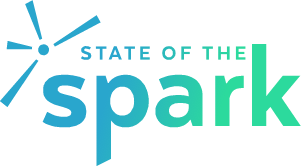I want you to think about thinking for a second. (Bear with me. We’re going somewhere with this.)
Thinking About Thinking
First, stop where you are, take a seat, and rest for a moment. Think about your favorite trip. Close your eyes even and imagine it.
Think of the places you went, the food you ate, the things you saw. Think of the temperature in the air, and the small nooks you discovered.
Second, as you continue to think about your favorite trip, now imagine you are across the room, looking back on yourself thinking about your favorite trip. Sit your removed self, your mind, in a couch or seat across from your seated self. Feel the armrest. Observe the room from that perspective.
Look back at your seated self.
Do you have your eyes closed? Are you fidgeting or calm? As you see yourself thinking about your trip, can you see how you feel? Are you happy, sad, or both?
That is thinking about thinking.
Our Thinking About Thinking is What Really Influences Our Success
When it comes to our success results (or lack thereof), we know by now that every small business coach and trainer says it relates to our habits. And, as they say, our habits are a product of our thoughts. Thoughts lead to Habits which lead to Results.
I would say that our results are a product of our thoughts but our success is a product of our thoughts about our thoughts.
Think about your achievements so far. Now, from your removed mind, assess how those thoughts make you feel.
Do those thoughts make you happy? Do they sadden you? Is there hesitation to come up with achievements that you are satisfied with, or do you know them right away?
Could you do the same process for the worst aspects of your success, job, or small business? The frustrations and the things that are hindering your happiness? Could you use this process to identify which of your thoughts you need to change to take better actions? Of course you could!
Think About Success Thinking
I want you to be seated again. Rest yourself. Now close your eyes and start thinking about the things that most frustrate you about your job or small business.
Perhaps it is an employee who frustrates you.
Perhaps it is a lack of systems which you desperately need.
Perhaps it is the need for training yourself as a real leader.
Think about the employee, system, or lack of knowledge. Go deep with it. Describe it in detail.
While that is going on, move your mind across the room and look back at yourself. As you observe your seated self thinking of your frustration in detail, observe how it makes your seated self feel.
Does it cause shortness of breath? Does it cause fidgeting? Does it cause a knot in the stomach?
If You Can Think About Thinking, You Can Change the Thinking
If you can look across the room and find that you don’t like the arrangement of the pillows, you can adjust them. It is the same with anything you can see across the room, including your thoughts.
If you don’t like how thinking your thoughts causes you to feel, you can change them.
And if you can be honest in your assessment of whether or not your thoughts are hampering your feelings of success, you have a chance to identify and improve your thinking.
If you can change your thoughts to cause you to feel better, to free your mind up to be more productive, you are not a victim. You are in the control position to make your life better.
Fun With Thinking About Thinking
And now, let’s have fun with it. Let’s jump between the two. (This practice is a little fun, but it is also a helpful practice to cultivating the ability to think about thinking even better.)
From across the room, while allowing your seated self to feel the way he or she feels, decide to allow your removed self to feel good. Allow your removed mind to think of your favorite trip.
From your removed self, consider those fantastic foods you had. Now glance over at your seated self.
From your seated self, think about when the frustration began, even before you were aware of it.
From your removed self, consider how it felt to walk the countryside and smell new air. Glance over at your seated self.
From your seated self, think about when you became fully aware that something had to be done about it.
From your removed self, consider the shear joy of waking in the new place and the expectation of the day. Now, check in with your seated self.
From your seated self, make a resolution on one core action you could take today to improve the frustration. Notice how it makes the seated self feel to make a resolution.
Now how powerful would it be if while your seated self was in reactionary frustrated mode your removed self, your mind, was thinking of most positive courses of action?
How powerful would it be if your mind was thinking of:
- a helpful, happy conversation you could have with the employee, or
- of at least 1 new system to implement, or
- how to purchase that leadership book you’ve been meaning to purchase?
How empowering would that be?
This is the Starting Point of Working On Your Thoughts
This ability, to think and feel two different ways, is the power of identifying and modifying our thoughts. Because when you move your removed self, your mind, back to your seated self, you have a choice.
Your choice is to pick which self you want to think and feel from. One is a primal, reactionary self. The other is an intentional, will-driven self that is typically proactive.
You have this choice every time you notice a personal frustration.
So, when small business coaches say that you need to control your thoughts to control your success, they are glazing over these very important practices.
To control your thoughts, you must think about the thoughts. You must identify if you like the way they make you feel and the quality of the thoughts. Then, you can begin to choose which thoughts to think about.
This skill is the starting point of being able to direct your thinking in more productive, helpful ways.






0 Comments